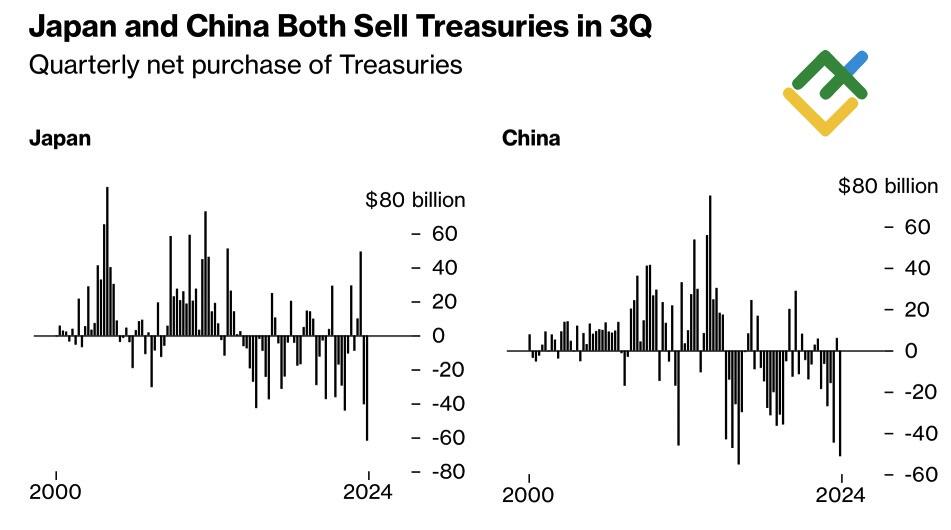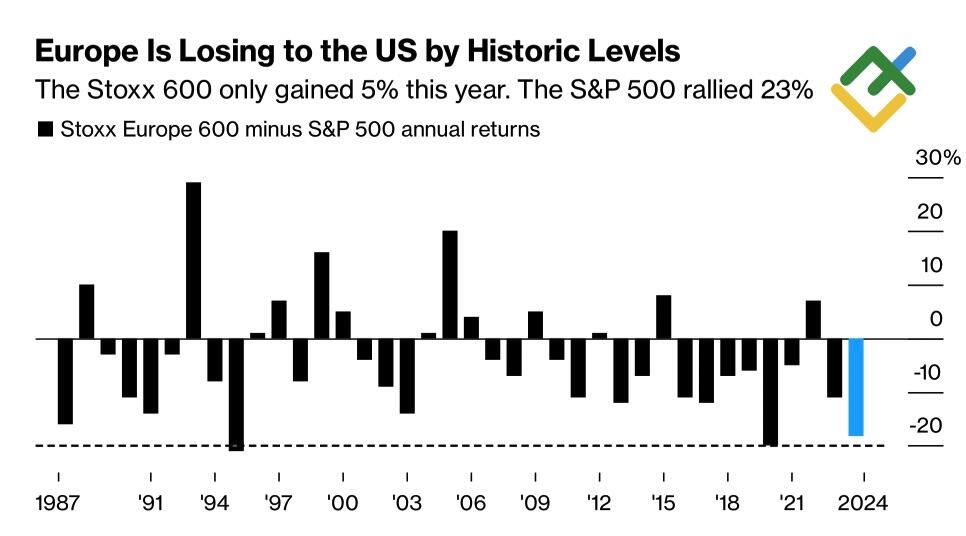
The speculation that China is selling US Treasuries and Europe is increasing exports to the US in anticipation of trade wars has prompted EURUSD bears to lock in profits. Let’s discuss this topic and make a trading plan.
The article covers the following subjects:
Major Takeaways
- Japan and China are getting rid of Treasuries at a record pace.
- Europe is increasing exports to the US in expectation of new tariffs.
- Washington is not afraid of China’s retaliation.
- The EURUSD pair’s upward pullback or a return below 1.0545 are reasons to sell.
Weekly US Dollar Fundamental Forecast
It is often beneficial to examine historical data to gain insight into future trends. Investors were actively capitalizing on the 2016 pattern, purchasing the US dollar after Donald Trump’s victory in the US presidential election. Similarly, the value of the US dollar increased significantly eight years ago. However, the USD index experienced a 10% decline after Trump’s first term. The primary cause was the pandemic, but there was a period when the US currency was declining due to concerns that China would sell US Treasuries in retaliation for tariffs. EURUSD bears were taken aback when this process began in the third quarter of 2024.
In July-September, the two largest holders of US Treasuries reduced their holdings. Japan sold a record $61.9 billion, while China sold $51.3 billion, the second-highest result ever.
Japan and China Selling US Treasuries
Source: Bloomberg.
If Tokyo’s economic maneuvers can be linked to the currency intervention carried out during this period to prevent the yen from collapsing, Beijing’s move raises concerns. In late 2017 and early 2018, the US dollar was declining despite an increase in Treasury bond yields. The market suggested that China was getting rid of US Treasuries in retaliation for import duties imposed by the US.
It became evident at that time that the United States was not deterred by this tactic. An increase in yields on US bonds has a negative impact on the global economy, including China. The increase in borrowing costs hurts economic growth. The US dollar saw a swift recovery to 2016 levels at the onset of the pandemic but subsequently dropped due to the Fed’s extensive monetary stimulus measures in 2020.
The recurrence of the 2017-2018 pattern prompted concern among EURUSD bears, who sought to secure profits on their short positions. This is particularly relevant given the likelihood of an increase in European exports to the US ahead of Donald Trump taking office. The exports saw an 8.9% increase in September, as EU companies increased sales ahead of new tariffs from the Republican administration.
Despite the EURUSD rebound, there has been no change in the fundamental outlook for the pair. Furthermore, the IIF anticipates that the absence of import duties, coupled with an aging population and lower productivity, will result in a deceleration of eurozone GDP to 1.45% by 2029. Conversely, the US is projected to experience economic growth of 2.29%. European companies continue to face challenges in the global market, with Goldman Sachs attributing the strength of the US dollar to factors such as tariffs, a robust economy, and a high demand for assets.
EU and US Stock Indices’ Performance
Source: Bloomberg.
Weekly EURUSD Trading Plan
Therefore, there is a usual correction in the EURUSD pair. If it rebounds from the resistance levels of 1.061-1.0625, 1.068-1.07, or returns below 1.0545, one can open more short positions.
Price chart of EURUSD in real time mode
The content of this article reflects the author’s opinion and does not necessarily reflect the official position of LiteFinance. The material published on this page is provided for informational purposes only and should not be considered as the provision of investment advice for the purposes of Directive 2004/39/EC.
{{value}} ( {{count}} {{title}} )
This post is originally published on LITEFINANCE.





